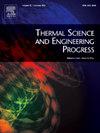Interpretable Machine learning model for predicting Ethane-Ethylene composition in binary distillation process
IF 5.1
3区 工程技术
Q2 ENERGY & FUELS
引用次数: 0
Abstract
Accurate prediction of ethane and ethylene compositions in binary distillation columns is critical for optimizing industrial separation processes. Traditional modeling approaches often struggle with process nonlinearities and variabilities, resulting in inefficiencies. This study evaluates non-ensemble models (SVR, DTR, KNN) and ensemble models (RF, GBR, XGB) to significantly enhance predictive accuracy and address these challenges. While the DTR model outperformed other non-ensemble models, the ensemble models exhibited superior performance. Among these, the XGBoost model demonstrated the highest accuracy, achieving R2 values of 0.968 (test) and 0.993 (train) for ethane composition, with a mean absolute error (MAE) of 0.21 and root mean square error (RMSE) of 0.27. For ethylene composition, XGBoost achieved R2 values of 0.971 (test) and 0.987 (train), with MAE and RMSE values of 0.32 and 0.43, respectively. To enhance model interpretability, Shapley Additive exPlanations (SHAP) analysis identified the reboiler duty to feed flow ratio as the most significant feature, contributing + 1.79 SHAP units for the bottom product and + 0.24 for the top product. Aditionally, a real-time application platform was developed to deploy the XGBoost model, enabling non-expert users to make informed decisions in industrial operations. This study addresses key challenges in ethane-ethylene separation, providing solutions to improve thermodynamic efficiency and sustainability in industrial distillation processes.

求助全文
约1分钟内获得全文
求助全文
来源期刊

Thermal Science and Engineering Progress
Chemical Engineering-Fluid Flow and Transfer Processes
CiteScore
7.20
自引率
10.40%
发文量
327
审稿时长
41 days
期刊介绍:
Thermal Science and Engineering Progress (TSEP) publishes original, high-quality research articles that span activities ranging from fundamental scientific research and discussion of the more controversial thermodynamic theories, to developments in thermal engineering that are in many instances examples of the way scientists and engineers are addressing the challenges facing a growing population – smart cities and global warming – maximising thermodynamic efficiencies and minimising all heat losses. It is intended that these will be of current relevance and interest to industry, academia and other practitioners. It is evident that many specialised journals in thermal and, to some extent, in fluid disciplines tend to focus on topics that can be classified as fundamental in nature, or are ‘applied’ and near-market. Thermal Science and Engineering Progress will bridge the gap between these two areas, allowing authors to make an easy choice, should they or a journal editor feel that their papers are ‘out of scope’ when considering other journals. The range of topics covered by Thermal Science and Engineering Progress addresses the rapid rate of development being made in thermal transfer processes as they affect traditional fields, and important growth in the topical research areas of aerospace, thermal biological and medical systems, electronics and nano-technologies, renewable energy systems, food production (including agriculture), and the need to minimise man-made thermal impacts on climate change. Review articles on appropriate topics for TSEP are encouraged, although until TSEP is fully established, these will be limited in number. Before submitting such articles, please contact one of the Editors, or a member of the Editorial Advisory Board with an outline of your proposal and your expertise in the area of your review.
 求助内容:
求助内容: 应助结果提醒方式:
应助结果提醒方式:


